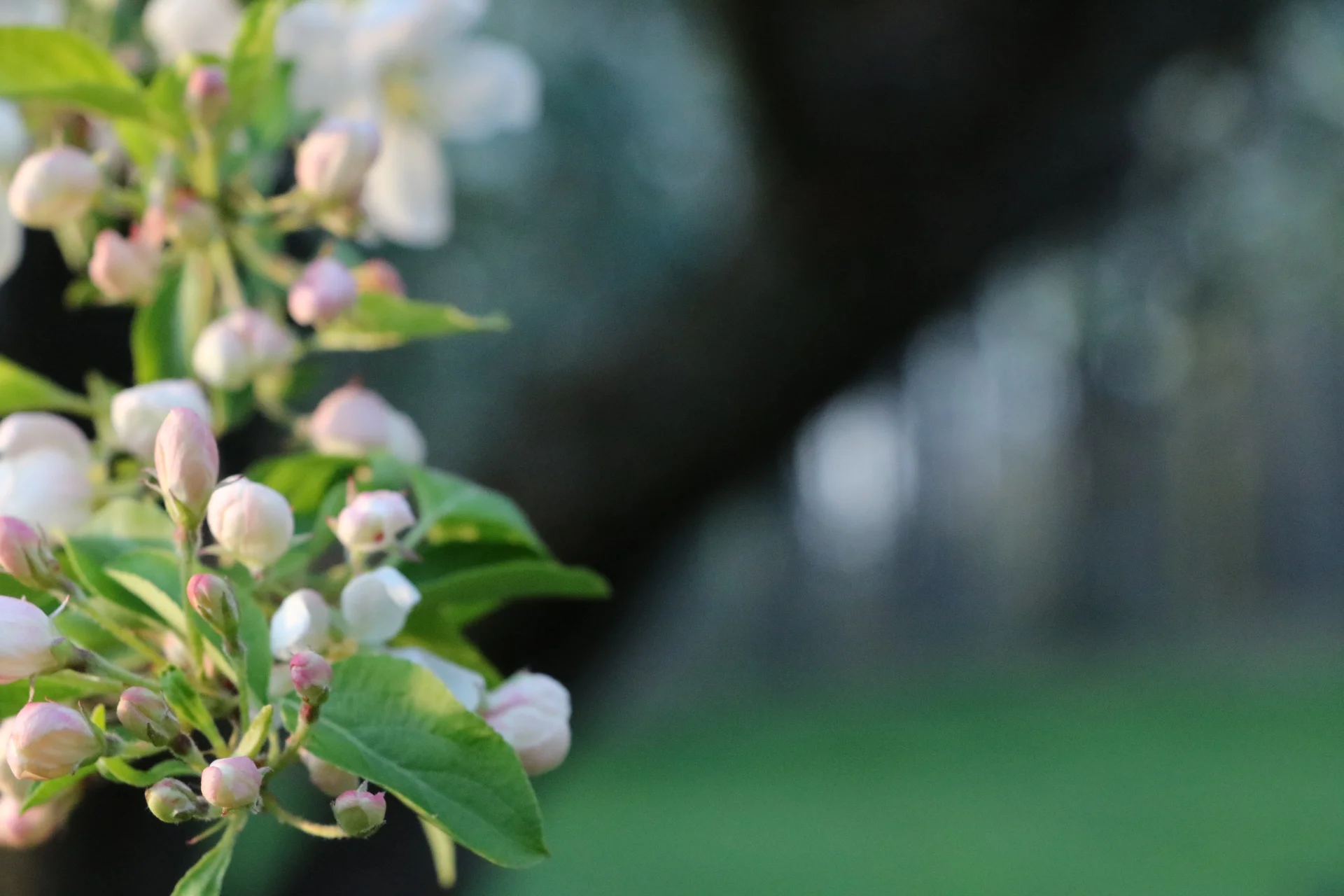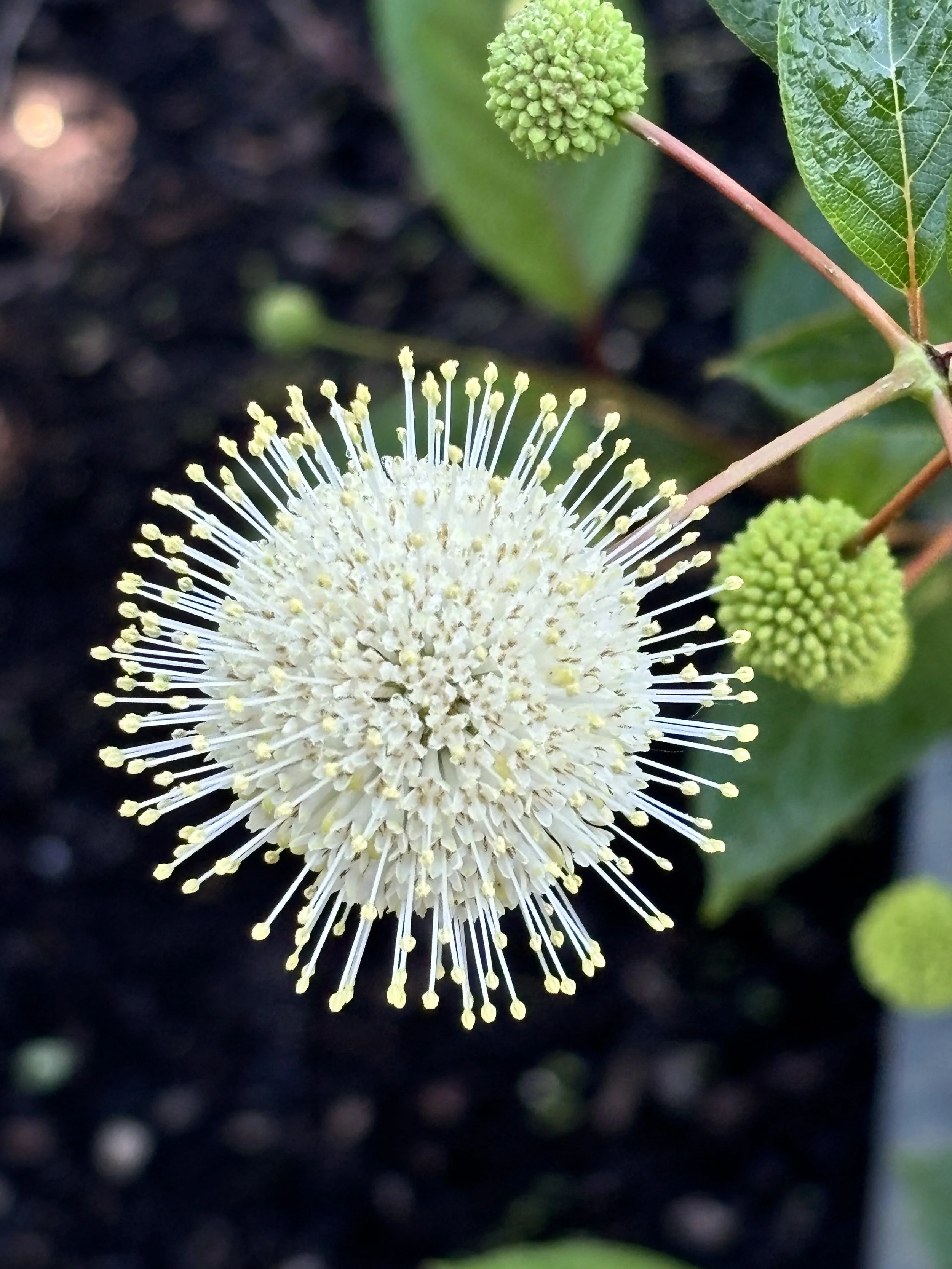Parker's Picks — Buttonbush
/Buttonbush
(cephalanthus occidentalis)
The buttonbush (cephalanthus occidentalis) is a deciduous shrub indigenous to the wetlands of Western New York renowned for its distinctive spherical flower clusters. This shrub typically reaches heights between 6 and 10 feet. It thrives in full sun to partial shade and prefers medium to wet soil conditions. Notably, buttonbush can withstand flooding and endure shallow standing water, though it can struggle in dry soil. Its lush, dark green foliage transforms to a vibrant yellow in autumn. Frequently utilized in landscaping, buttonbush is an excellent choice for rain gardens or wetland restoration projects.
Buttonbush is a magnet for a variety of birds due to its rich nectar, especially appealing to hummingbirds. Its fruits serve as a food source for waterfowl and various other bird species, including songbirds. Additionally, the nectar from buttonbush blossoms is a vital resource for bees and butterflies, playing a crucial role in supporting pollinators. Small mammals also enjoy the fruits and leaves of this plant. Once established, buttonbush is typically regarded as resistant to deer.
Different Native American tribes utilized various parts of the buttonbush for their medicinal properties. It was commonly employed to alleviate ailments including fevers, coughs, and digestive problems.
The Seneca and Iroquois tribes particularly valued buttonbush as a healing remedy, using its leaves and bark to address health issues such as fevers and digestive complaints.
Additionally, the flexible branches of the buttonbush were often crafted into baskets, fishing nets, and other tools.


